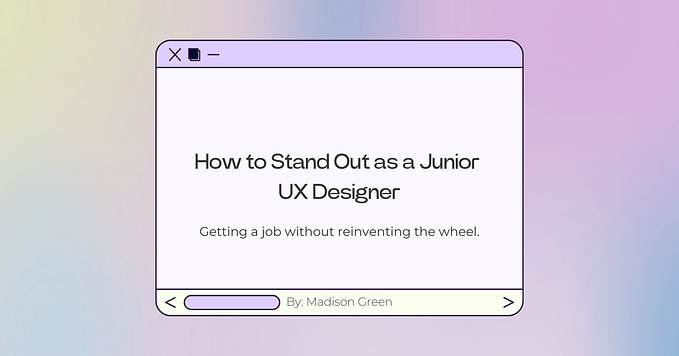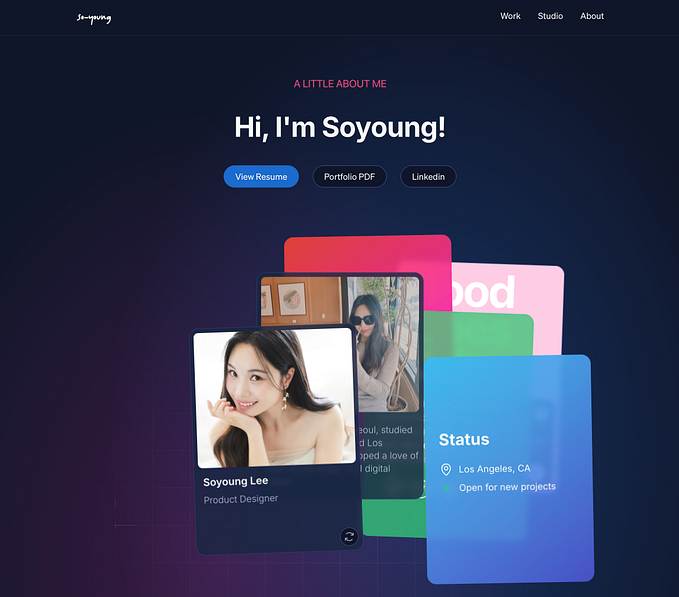My design process as a UI/UX designer — Starting to Handover

“Deciding what not to do is as important as deciding what to do.” — Steve jobs.
“Design is not just what it looks like and feels like. Design is how it works.” — Steve Jobs.
I am more comfortable saying that i am a problem solver rather than saying i am a UI/UX designer. To solve any problem there should be a process that can break down the problem and help to solve it more accurately. without having a process will look like you are ruining without any destination, there is no end also it will take lots of time to solve any problem. that is the reason everyone should have a design thinking process. i follow the Double Diamond process, which is the name of a design process model popularized by the British Design Council in 2005, and adapted from the divergence-convergence model proposed in 1996 by Hungarian-American linguist Béla H. Bánáthy.

Hench, there is no right or perfect problem-solving process because every problem is different, to solve a specific problem we need a specific solution. but having a problem-solving process allows me to start working on the problem initially without wasting time by assuming. once i can understand the problem then i can tweak the process according to it’s need. even it let me know when to break the rules and why it has a good reason.

The Double Diamond process :
there are two diamonds in the double diamond process:
- First Diamond used for UX
- Second Diamond used for UI
That two diamonds have four-step:
- Discover
- Define
- Develop
- Deliver
So let’s discuss how i apply the Double Diamond process to my real-life project:
Whenever i got a new project, immediately i start with this double diamond process:
At first, i focus on UX

on the UX diamond diagram, there are two-step: Discover and Define.
Discover:
On discover, i will go wide to explore the problem in detail :
- understanding the problem: to understand the problem i start talking with the client/team, trying to hear their story how they came up with their ideas, and how they want to affect users and business with their products.
- Observing the problem: on this phase, i will start observing what i got from the client/team. their targeted users, their business plans, their requirements, their competitors, and more. also, will observe how i can add value to their ideas/plans.
- Researching on the problem: once i got the targeted user and the business plans and requirements then i will go to the targeted users, and will do research on their opinion about the project. My research includes a survey for the wide range of user research and User persona to know more dept of a single user perspective.
- Competitive analysis: also if there are any competitors available, then i will start a competitive analysis about how they function and how i can make a better experience.
Define:
After discovering the problem i will have much more information about the problem, so in the define stage i will narrow down every piece of information i have :
- Summarise the whole Discovery stage: i will summarise the whole problem and start finding and start to point out the user perspective and business perspective
- Requirements: after summarising once again i will start discussing with the client/team to find out those requirements the business and the users want together.
- Feature Priority: once i find the requirement then i will make a feature priority list which will help me to prioritize features in the future.

When i will be done with the UX part then i will start with the second diamond, i spend more time on this stage.
On the UI diamond diagram, there are two steps: Develop and Deliver.
Develop:
In develop, again i will go wide to explore design solutions based on the result i got from the first diamond. i will
- Ideate: instead of jumping directly on designing on design software like Figma or sketch, i start brainstorming with pen and paper. i make some initial sketches( also known as low fidelity wireframes) to play with the idea i got from UX.
- Wireframes: once i am happy with brainstorming ideas and done with making some initial sketches then i jump into making a wireframe of it, it helps to see if the functionality/feature is working or not. with wireframe, i reach out to the client/team to discuss more that.
- Visual Research: after completing the wireframe i jump into doing visual research. visual research includes the color, typography, and style guide. most of the time i select a color based on the product type and targeted users also including color theory to make the best color for the project, the same goes for typography and others.
- Visual Design: on this phase, i started to make some concept design. i play with different concepts based on my all exploration. i often use most of my time here to make my design as much as visually attractive.
Deliver:
After developing the product here come to deliver the final product which is done at this stage. on this stage again i will narrow down every piece of design i have :
- Finalizing the Design: on this phase, i present my different concepts towards the client/team and after discussing with them together we finalize one design to go further.
- Prototyping: with the finalized design i make a clickable prototype to get feedback from users.
- Collecting feedback: with the prototype, i took feedback from the client/team and also from the users. i try to improve the design based on their feedback. once i have done with the update and the final design is ready to ship.
and i finally transfer the design to the developer team. most of the time to transfer the design by using zeplin or Figma, to learn more about what tools i use for my daily to a daily basis you can read my another article on “tools i use as a UI/UX designer”
Note: This cycle will be continued whenever the product will release and we will make improvements by collecting more feedback from the users.

About the cycle of improvements there is a saying by me that :
There is no final design or there is no perfect design.
Make your design usable. that’s enough.
It’ll save your time and your mental health.
Thanks for the read. have a great day.










